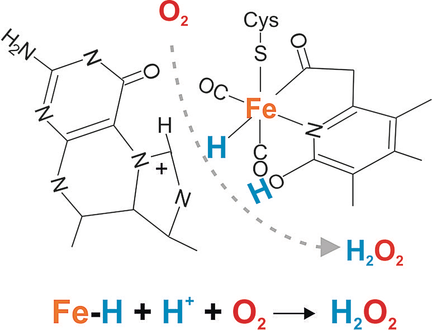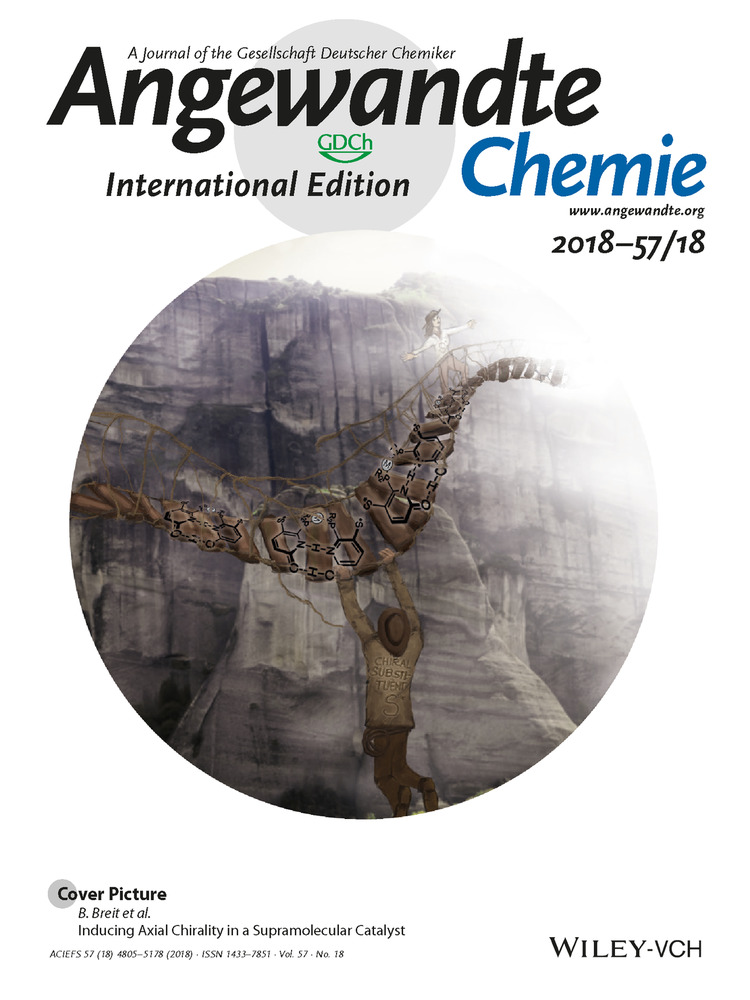Dioxygen Sensitivity of [Fe]-Hydrogenase in the Presence of Reducing Substrates
Graphical Abstract
Mono-iron hydrogenase carrying an iron guanylylpyridinol (FeGP) cofactor reversibly catalyzes hydride transfer from H2 to methenyltetrahydromethanopterin. The enzyme becomes O2 sensitive under turnover conditions because reduced O2 (H2O2) destroys the FeGP cofactor. It is postulated that the reductant of O2 is a short-lived intermediate of the catalytic reaction; probably an iron hydride species generated by H2 cleavage.
Abstract
Mono-iron hydrogenase ([Fe]-hydrogenase) reversibly catalyzes the transfer of a hydride ion from H2 to methenyltetrahydromethanopterin (methenyl-H4MPT+) to form methylene-H4MPT. Its iron guanylylpyridinol (FeGP) cofactor plays a key role in H2 activation. Evidence is presented for O2 sensitivity of [Fe]-hydrogenase under turnover conditions in the presence of reducing substrates, methylene-H4MPT or methenyl-H4MPT+/H2. Only then, H2O2 is generated, which decomposes the FeGP cofactor; as demonstrated by spectroscopic analyses and the crystal structure of the deactivated enzyme. O2 reduction to H2O2 requires a reductant, which can be a catalytic intermediate transiently formed during the [Fe]-hydrogenase reaction. The most probable candidate is an iron hydride species; its presence has already been predicted by theoretical studies of the catalytic reaction. The findings support predictions because the same type of reduction reaction is described for ruthenium hydride complexes that hydrogenate polar compounds.





